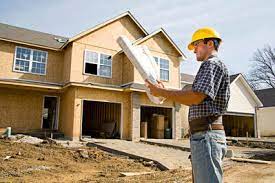As environmental awareness continues to shape consumer choices, the construction industry is experiencing a paradigm shift towards eco-friendly home building with a great home builder. Sustainable practices not only reduce the environmental impact of construction but also contribute to energy efficiency, cost savings, and healthier living spaces. In this article, we will explore the principles and practices of eco-friendly home building, providing a comprehensive guide for those looking to embark on a sustainable construction journey.
1. Site Selection and Design: Nurturing Harmony with Nature
The foundation of eco-friendly home building begins with thoughtful site selection and design. Choose a site that minimizes disruption to the natural landscape and maximizes energy efficiency. Orient the home to optimize natural light, reduce energy consumption, and consider passive solar design principles to harness the sun’s energy for heating and cooling.
2. Energy-Efficient Building Materials: A Sustainable Palette
Selecting environmentally friendly building materials is a key aspect of sustainable construction. Opt for materials with low embodied energy, such as recycled steel, reclaimed wood, and locally sourced materials. Explore alternatives to traditional concrete, such as fly ash or recycled aggregate concrete, which reduce the carbon footprint of construction.
3. Smart Insulation and Ventilation: Thermal Comfort and Efficiency
Prioritize insulation and ventilation systems that enhance energy efficiency. High-quality insulation materials, such as recycled denim or cellulose, reduce heat loss and gain, contributing to a more comfortable living environment. Implement natural ventilation strategies to minimize the reliance on mechanical systems, fostering energy conservation.
4. Energy-Efficient Windows and Doors: Harnessing Natural Light
Energy-efficient windows and doors play a pivotal role in sustainable home design. Choose products with low U-values and high solar heat gain coefficients to maximize thermal performance. Opt for double or triple-glazed windows with low-emissivity coatings to reduce heat transfer, while still allowing ample natural light to illuminate the living spaces.
5. Renewable Energy Systems: Powering the Home Sustainably
Incorporating renewable energy sources is a hallmark of eco-friendly home building. Install solar panels or wind turbines to generate clean and sustainable energy for the home. Coupled with energy-efficient appliances and lighting, renewable energy systems significantly reduce the home’s dependence on non-renewable resources.
6. Water-Efficient Design and Landscaping: Preserving a Precious Resource
Sustainable homes prioritize water efficiency in both design and landscaping. Install low-flow fixtures, such as water-saving faucets and toilets, to minimize water consumption. Implement rainwater harvesting systems to collect and reuse rainwater for irrigation, reducing the demand on municipal water supplies.
7. Waste Reduction and Recycling: Minimizing Construction Impact
Eco-friendly home building extends beyond the construction phase to waste reduction and recycling. Implement construction waste management plans to divert materials from landfills. Recycle or repurpose construction debris, and prioritize materials with recyclable or biodegradable components.
8. Green Roofing and Sustainable Landscaping: Natural Integration
Green roofs, covered in vegetation, provide insulation, absorb rainwater, and contribute to improved air quality. Incorporate sustainable landscaping practices by choosing native plants that require minimal water, promoting biodiversity, and reducing the need for chemical pesticides or fertilizers.
9. Smart Home Technologies: Enhancing Efficiency and Control
Integrate smart home technologies to enhance energy efficiency and provide greater control over the home’s systems. Smart thermostats, lighting, and home automation systems enable homeowners to optimize energy usage, reduce waste, and create a more responsive and efficient living environment.
10. Certifications and Ratings: A Stamp of Approval
Seek certifications and ratings that validate the sustainability of your home construction. Certifications such as LEED (Leadership in Energy and Environmental Design) or ENERGY STAR provide recognition for eco-friendly building practices and contribute to the home’s resale value.
Conclusion:
Eco-friendly home building is a transformative approach that goes beyond construction techniques; it’s a commitment to a sustainable and harmonious coexistence with the environment. By incorporating sustainable practices from site selection to smart home builders, homeowners can create dwellings that not only minimize their ecological footprint but also provide comfortable, energy-efficient, and healthier living spaces. As the demand for eco-friendly homes continues to rise, embracing sustainable construction practices becomes not just a choice but a pivotal step towards building a more sustainable and resilient future.


